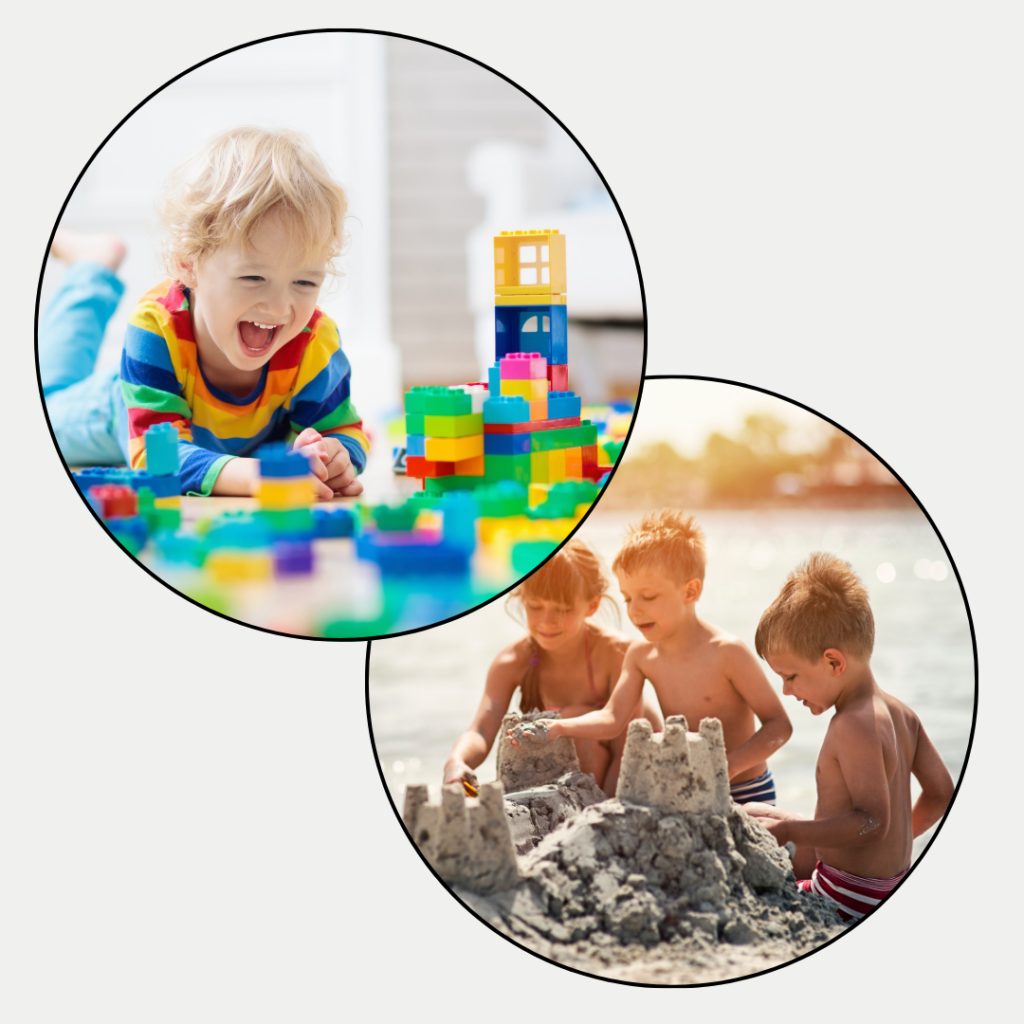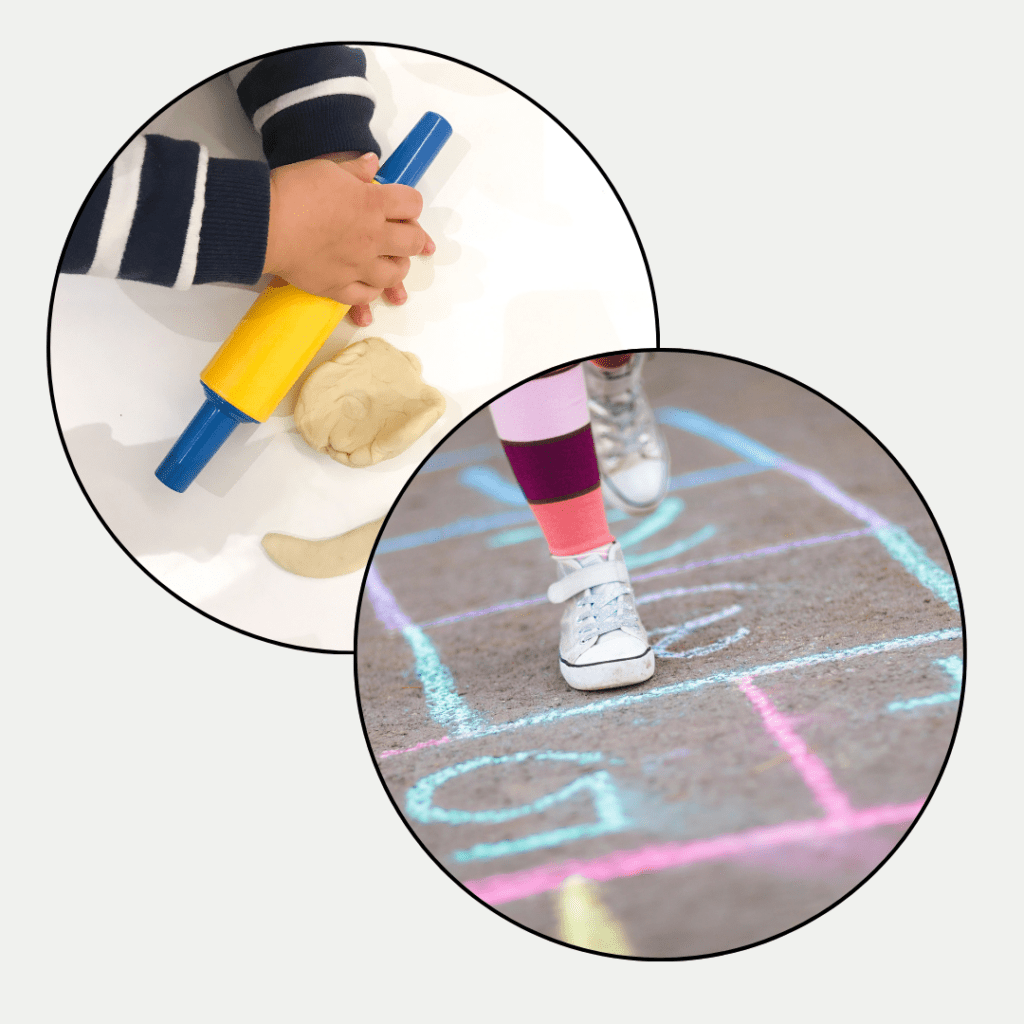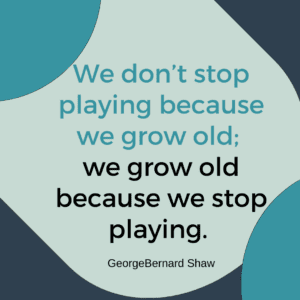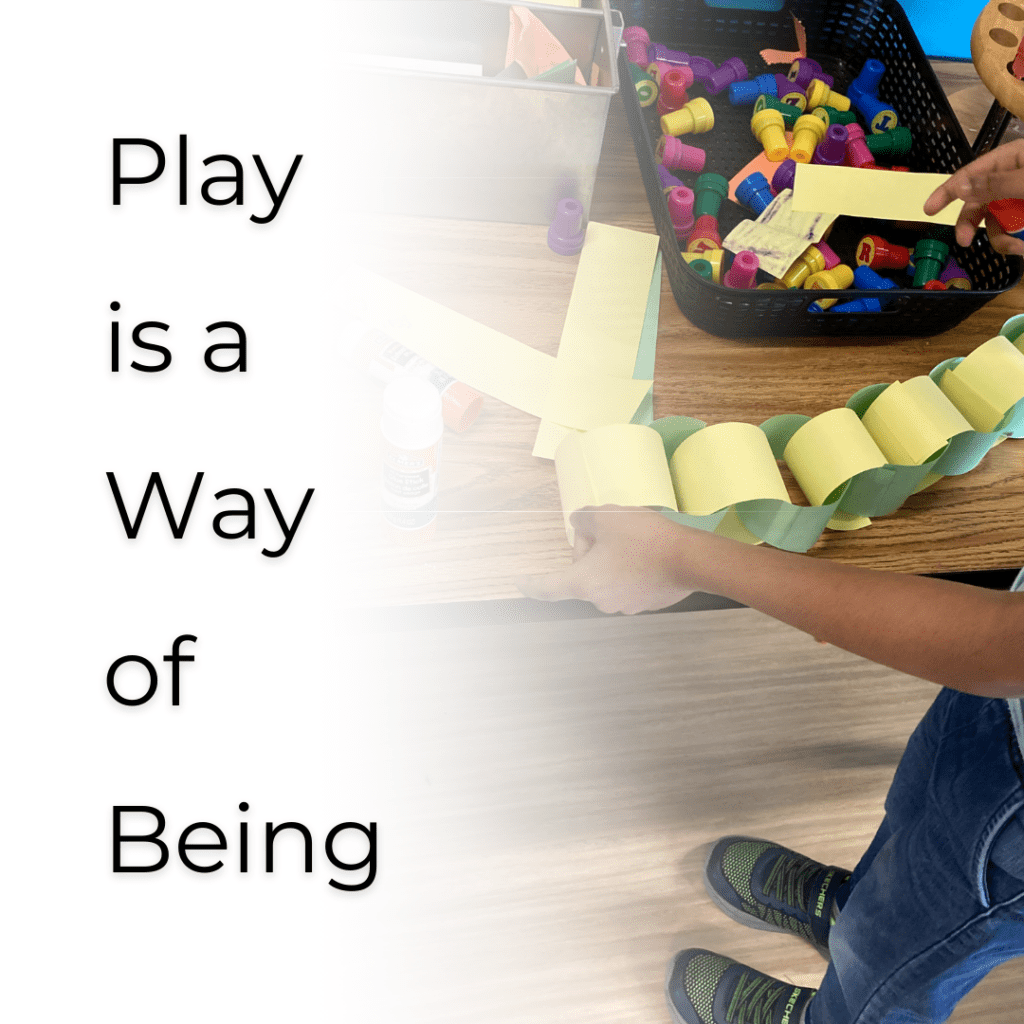The characteristics of play can not be defined with one term. I imagine if I were to ask you about the image that pops into your mind when I say the word play, the results would vary.
Were you thinking of a child building with blocks?
Or were thinking of a child playing in a sandbox?
Perhaps you were thinking of a child playing with play-doh?
Or maybe you were thinking of a child playing hopscotch.


But, is play only for children?
Play can also be….


Building a model
Painting a picture
Capturing an image
Sewing a project
Characteristics of Play
Play is not defined by any single identifying characteristic, but by a coming together of four characteristics (Gray, 2023). Sometimes play contains all four characteristics. Other times play contains varying degrees of the characteristics.
Self-chosen and self-directed
Play should be what one wants to do as opposed to what one is obliged to do. A player should be able to choose not only what to play but what and how to play.
Process rather than product driven
Play is an activity that is done for it’s own sake rather for some reward outside of itself. Think of the child building a sandcastle. They are not doing this to create a long-lasting structure rather it is the process of playing and building that is important. Play can also involve repetition. This might look like doing the same things again and again, and making small changes each time. Does playing with a recipe come to mind.
Contains structures or rules
Play has structures and rules established by the players themselves Vygotsky argued that is social play, children learn to abide by socially agreed-upon rules. Truly an important life skill.
Creative and usually imaginative.
Play is always creative. It is the perfect opportunity to exercise our capacity for creativity. We see the imaginative aspect when we observe children role-playing. I’ll be the waiter and I’ll come and ask you (the customer) what you want to order.
Play is a way of thinking and being.

Happy Playing,
Lynda





